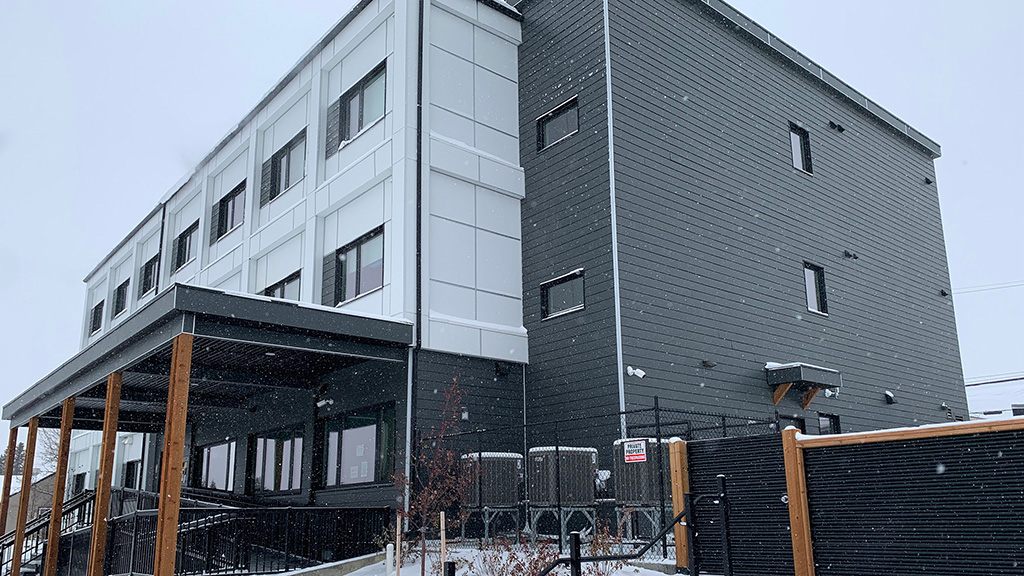A new report finds although modular construction has the potential to help address the housing crisis, it needs an enabling environment in order for the benefits of it, namely speed and cost savings, to be realized.
“It’s one thing to say that we want to use this innovative method to build the housing that we need, but then if we don’t align how we do our approvals, how we procure, how we finance, we’re going to miss out on the benefits it offers,” said Nevena Dragicevic, manager of public policy with the CSA Public Policy Centre, who is also one of the authors of the report.
Seizing the Modular Opportunity, released earlier this month, outlines five recommendations for government leaders to leverage the potential of modular construction.
“We know that we need innovation in this sector that is sort of struggling with productivity and labour shortages, rising cost of materials, I think that’s a narrative that’s really familiar,” Dragicevic said.
“There is this great potential in modular to help Canada meet its needs for more housing but also institutional buildings like hospitals and long-term care homes, especially with an aging population.”
The benefits of modular housing can only be realized with broader awareness and understanding of modular methods, greater regulatory consistency and more compatible procurement and financing practices, states the report, adding all levels of government have important roles to play.
“Developers should be reading this and government at all levels,” Dragicevic said of the paper. “We have a few recommendations that specifically speak to what federal and provincial governments can do in terms of aligning their procurement processes so that they can give modular construction firms a better chance to bid for things like building hospitals and long-term care homes and also affordable housing.”
The local level regulators and municipalities that are responsible for inspecting, certifying and approving modular buildings should also read the report.
“There is still only about a six per cent market penetration at the moment in terms of what is being built, so a lot of these folks understandably don’t have a lot of experience with modular. It takes them a longer time to approve and certify and inspect, but there are standards like CSA A277 that speaks to a procedure for how to do these approvals more efficiently. I think local authorities really benefit from having greater knowledge,” Dragicevic pointed out.
The report outlines five recommendations for government leaders: address building code gaps and inconsistencies; develop guidance and training for industry and regulators; improve access to financing for modular construction; make it easier to procure modular projects; and build up evidence in support of modular construction.
“We discuss the need for a more supportive building code and better knowledge among regulators who inspect, certify and approve modular projects so these types of projects don’t get unnecessarily delayed or stuck,” Dragicevic noted.
There is also a need to look at how public procurements and lending programs can align better with how modular construction works.
“It’s front-loaded nature where everything sort of needs to be designed upfront and materials need to be purchased upfront, so the way that these things, in terms of procurement and lending, can make it impossible or impractical to access to the point where all the benefits you would have in terms of potential cost savings are kind of washed away,” she said.
Knowledge and awareness is also key.
“We talk about, generally, there is greater need for more evidence and a greater knowledge base to support ongoing innovation and uptake of modular,” Dragicevic said. “The report draws on a number of datapoints from other jurisdictions around the world, but it would be great to have more Canadian evidence to help support the argument to continue investing in modular.”
Modular construction is also sustainable which would also help Canada achieve its climate goals. By standardizing components used in the manufacturing process, modular construction has the potential to reduce waste by as much 46 per cent, states the report, adding due to the controlled production environment, it can also reduce construction emissions by up to 22 per cent.
The report can be found at Seizing the Modular Construction Opportunity (csagroup.org)
Follow the author on X/Twitter @DCN_Angela.









Recent Comments
comments for this post are closed